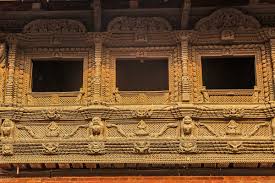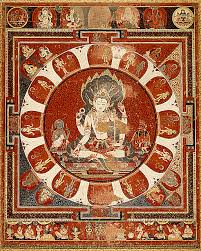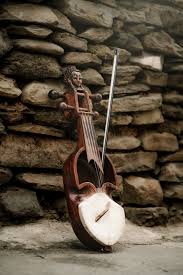Share this Article
Aakhijhyal: The Newar Lattice Windows Craft
introduction
Aakhijhyal, also known as “eye windows,” are a unique form of lattice windows crafted by the Newar community of the Kathmandu Valley. More than just architectural features, these windows embody the artistry, religious symbolism, cultural identity, and historical continuity of the Newars. Traditionally found in the palatial buildings, bahals (monastic courtyards), and homes of the Malla era (12th–18th centuries), these intricately carved wooden windows are a visual testament to Nepal’s rich artistic heritage.
In a rapidly urbanizing nation, Aakhijhyal faces the dual threat of modernity and neglect. This article delves into the historical background, construction techniques, cultural significance, religious meaning, and the contemporary challenges of preserving the Aakhijhyal craft in a fast-changing Nepal.
The Meaning Behind the Name: Aakhijhyal
The term Aakhijhyal is derived from two Nepali words: Aakhi meaning "eye" and Jhyal meaning "window." Together, it symbolizes the idea of “the window as the eye” of the house or building. These latticed windows not only allowed the inhabitants to see the world outside without being seen but also symbolized an all-seeing architectural motif—often believed to reflect spiritual awareness and the protective gaze of deities.
In the cultural imagination of the Newars, a house was not merely a shelter but a living organism with eyes, ears, and a soul. Aakhijhyal, in this sense, provided the house with sight, surveillance, and connection to the outside spiritual and social world.
Historical Origins and Evolution
The origins of Aakhijhyal can be traced back to the Malla period, a golden age of art and architecture in the Kathmandu Valley. During this time, kings of the three Newar city-states—Kathmandu, Patan (Lalitpur), and Bhaktapur—competed in constructing grand palaces, temples, and civic buildings. Wood carving flourished as one of the highest forms of visual art.
Lattice windows began as practical installations, allowing air and light into the inner courtyards and rooms while offering privacy and protection. Over time, they evolved into complex masterpieces adorned with religious motifs, mythical creatures, flowers, and geometric patterns. The earliest surviving examples of such windows are found in the Hanuman Dhoka Durbar Square in Kathmandu and Bhaktapur Durbar Square.
Materials and Techniques
Aakhijhyal windows are traditionally carved from Shorea robusta (sal wood), valued for its durability and resistance to rot and insects. The crafting of one window can take weeks or even months, depending on size and complexity.
1. Design and Planning
- The artisan begins by sketching the window's layout, incorporating sacred geometry.
- Religious and astrological considerations often guide the design.
- Symbolic elements such as the lotus, vajra, kalash (water pot), and mythical beings like makaras and nagas are incorporated.
2. Wood Preparation
- The sal wood is dried and treated to reduce moisture and prevent warping.
- Timber is sectioned into planks and joined using traditional mortise-and-tenon techniques without nails.
3. Carving Process
- Skilled artisans use chisels, mallets, and knives to execute the intricate designs.
- Repetitive floral or vine motifs are aligned with spiritual harmony.
- Latticed patterns, which allow light and air to filter through, are carefully cut.
4. Assembly and Installation
- The carved panels are framed and tested for fit.
- Once assembled, the window is installed with careful alignment to ensure stability and aesthetics.
This process requires a lifetime of learning and apprenticeship, typically passed down through generations within Newar artisan families, especially among the Silpakars, the traditional caste of woodworkers.
Aesthetic and Symbolic Features
Each Aakhijhyal is a microcosm of Newar cosmology, social values, and aesthetic principles.
Floral and Geometric Patterns
- Lotus motifs symbolize purity and spiritual awakening.
- Repetitive vines and spirals represent the cycle of birth and rebirth.
Mythical Figures
- Guardians such as khyah (dwarfish protectors) or gajasimha (elephant-lions) are carved to ward off evil spirits.
- Serpentine nagas stand for water, fertility, and protection.
Tantric Symbols
- Mandala patterns indicate the universe’s structure and spiritual journey.
- The integration of vajras (thunderbolts) signifies power and indestructibility.
The intricate lattice serves not only a utilitarian function but also an esoteric purpose. From the outside, these windows invite admiration. From the inside, they provide a meditative view framed by sacred art.
Cultural and Social Significance
In traditional Newar society, architecture was an expression of identity. Houses, especially the façades, were symbols of status, family heritage, and craftsmanship. Aakhijhyal occupied a central role in these expressions.
Gender and Privacy
- Historically, women could observe street life through Aakhijhyal without being seen, allowing them to participate in social life while adhering to modest norms.
Ritualistic Importance
- During festivals like Indra Jatra and Gai Jatra, windows are decorated with flowers and lamps.
- It is from Aakhijhyal windows that families watch processions and offer blessings.
Narratives and Heritage
- In old neighborhoods like Yatkha, Bhaktapur, and Itum Bahal, windows on historic homes bear narratives of lineage, artistry, and spirituality.
- They speak of a communal lifestyle based on shared values, public rituals, and aesthetic harmony.
Regional Styles and Variation
While Kathmandu, Bhaktapur, and Patan all feature Aakhijhyal windows, each city has distinct stylistic nuances.
Kathmandu
- Known for its refined yet compact carvings.
- Windows are usually part of large bahal complexes.
Bhaktapur
- Features bolder and more elaborate designs.
- Multi-window arrangements adorn entire house façades.
Patan
- Patan’s windows emphasize balance and symmetry, often combining stone and woodwork.
Beyond the valley, influence of the Aakhijhyal style has spread to other parts of Nepal, though the authenticity often diminishes outside its cultural heartland.
Decline and Threats
Today, the Aakhijhyal craft faces an uncertain future. The reasons are multiple and interconnected.
1. Modern Construction Trends
- Concrete, glass, and aluminum dominate the urban skyline.
- Prefabricated windows are cheaper and faster to install.
2. Decline in Artisan Numbers
- Young generations prefer employment in other sectors.
- Artisan families lose traditional knowledge as the demand declines.
3. Lack of Institutional Support
- Few governmental policies actively support heritage architecture.
- Craft education is not integrated into mainstream curricula.
4. Earthquake Damage
- The 2015 earthquake damaged countless traditional buildings with original windows.
- Restoration efforts often substitute real craftsmanship with machine-made replicas.
Revival Efforts and Preservation
Despite the decline, certain initiatives offer hope for the preservation and revitalization of the Aakhijhyal craft.
Community-Led Projects
- Local groups in Bhaktapur and Patan collaborate with international NGOs to restore damaged heritage homes.
- Restoration employs local artisans and promotes intergenerational skill transmission.
Architectural Schools and Museums
- Kathmandu Valley Preservation Trust (KVPT) and Nepal Architecture Archive document and conserve window designs.
- The Patan Museum showcases authentic Aakhijhyal windows as cultural artifacts.
Private Sector Engagement
- Some boutique hotels and homestays incorporate traditional windows as unique aesthetic features.
- Architects trained in vernacular design promote the use of woodcraft in modern construction.
Recognition and Documentation
- UNESCO World Heritage designation for the valley has increased awareness.
- Photo documentation and virtual archives now store digital models of endangered windows.
Conclusion: Aakhijhyal as Living Heritage
Aakhijhyal is not merely an artistic relic from the past. It is a living heritage that speaks to the creativity, spirituality, and identity of the Newar people. Each lattice window is a dialogue between light and shadow, inside and outside, the sacred and the mundane. Its survival in modern Nepal hinges not only on nostalgia but on conscious preservation efforts, policy support, and a societal shift towards valuing indigenous craftsmanship.
To ensure that Aakhijhyal continues to “see” for future generations, we must integrate this cultural treasure into our urban narrative, educate youth about its value, and empower the artisan communities that keep this centuries-old tradition alive.
Categories:
Culture & Traditions
Tags:
Tradition of Community Feasts







